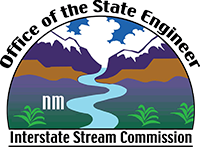Interstate Stream Commission
- OSE Home
- About ISC
- Basins
- Colorado River Basin
- Recovery Implementation Program
San Juan River Basin Recovery Implementation Program
Cooperative Agreement
The governor of the State of New Mexico signed a Cooperative Agreement in November 1992 for the State to participate in the San Juan River Basin Recovery Implementation Program to recover populations of endangered fish species in the river consistent with the Endangered Species Act. The program's dual goals are to conserve populations of Colorado pikeminnow and razorback sucker in the basin and to proceed with water development in the basin. Participants in the program include federal agencies, the states of Colorado and New Mexico, Indian tribes, and water user and conservation interests. Staffs of both the New Mexico Game and Fish Department and the Interstate Stream Commission participate in Implementation Program activities. A Program Document sets forth the structure and operating guidelines for the program. The Fish and Wildlife Service maintains a program office in Albuquerque to coordinate program activities.
Work Plans
The San Juan River Basin Recovery Implementation Program carries out its goals through the development of a Long-Range Implementation Plan and Annual Work Plans developed from the Long-Range Plan and available program budget.
Recovery Goals for Colorado Pikeminnow and Razorback Sucker
The Fish and Wildlife Service has issued Recovery Goals for Colorado Pikeminnow and Recovery Goals for Razorback Sucker. Progress of the San Juan River Basin Recovery Implementation Program toward meeting the recovery goals for both species provides Endangered Species Act compliance for water development and water management activities throughout the basin. The Fish and Wildlife Service periodically reviews program progress and issues a Progress Report assessing whether the program is making sufficient progress toward recovery of the San Juan River populations of the species.
San Juan River Flow Recommendations
A reasonable and prudent alternative identified by the 1991 Biological Opinion for the Animas-La Plata Project is the operation of Navajo Reservoir to mimic a natural hydrograph in the San Juan River for the benefit of populations of endangered fish in the river. The San Juan River Basin Recovery Implementation Program in 1999 adopted Flow Recommendations for the San Juan River to provide for adequate habitat deemed necessary to conserve the populations of endangered fish species in the river. The flow recommendations include a set of flow statistics (rates, durations and recurrence intervals) for spring peak flows in the river at Four Corners and target average base flows in the river between Farmington and Bluff at other times of the year. The Bureau of Reclamation now operates Navajo Reservoir to meet the flow recommendations or a reasonable alternative.
Capital Recovery Projects
The San Juan River Basin Recovery Implementation Program has identified the need to implement capital recovery projects in and along the San Juan River to improve habitat conditions for the endangered fish species in the river. In 2002, new diversion works with passive fish passage was completed at the Hogback project diversion, and the Cudei project diversion structure was removed from the river with lands under the Cudei water system thereafter served by a siphon constructed to tie into the Hogback Canal. Construction of a weir at the head of the Hogback Canal to prevent entrainment of endangered fish into the canal is anticipated to take place in 2011. At the San Juan Generating Station diversion weir, a selective fish passage structure was constructed, and the Navajo Nation operates the structure to allow passage of native fish while removing non-native fish from the river. Such projects improve range and habitat conditions for native fish species in the San Juan River. In addition, fish rearing ponds have been constructed and fish hatchery facilities utilized to develop endangered fish for stocking into the San Juan River so as to augment their populations in the river. The State of New Mexico entered into a contract with the National Fish and Wildlife Foundation to provide State cost-sharing for capital recovery projects approved by the program as required by Public Law 106-392. Public Law 106-392 has been amended to increase and extend the funding authorizations for such capital projects.
